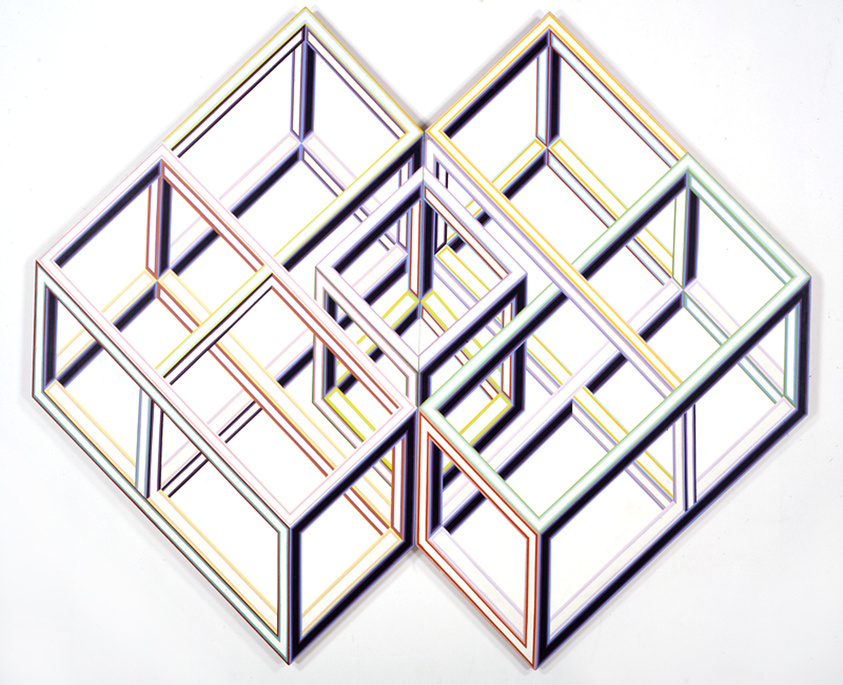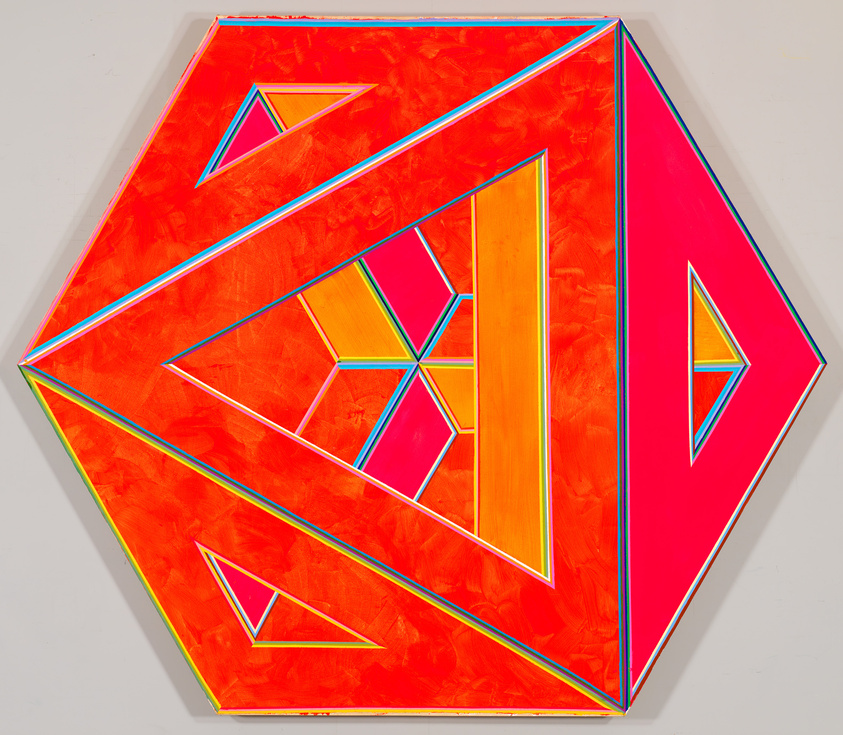Verbal Description: Alvin Loving, Rational Irrationalism, 1969
From In the Balance: Between Painting and Sculpture, 1965–1985 (Verbal description)
Oct 2, 2022
0:00
Verbal Description: Alvin Loving, Rational Irrationalism, 1969
0:00
Narrator: Alvin Loving, Rational Irrationalism, 1969. Rational Irrationalism is an acrylic painting on a shaped canvas. The painting measures 82 ⅛ inches tall by 97 inches wide.
This work plays with spatial illusion, and Loving intentionally created a geometric shape that looks like it’s almost popping off the wall at the viewer. Depicted are two large overlapping open-faced cubes positioned diagonally on their sides, with the corners of the cubes oriented up and down, creating multiple right-angled edges on the outsides of the work. This work itself is not rectangular, but instead takes the shape of the diagonally-tilted overlapping cube forms. Each of these large cubes is made up of four smaller sub-cubes. All sides of the sub-cubes are visible and differentiated with thin outlines of glowing neon hues like yellow, pink, green, red, blue, purple, light orange, and rust. Where the two large cubes overlap in the center of the work, there sits yet another, smaller cube, like a nesting doll. The inner cube has yellow base lines, light orange and rust inner lines, and a white top lines. Some lines on the edges of the shape are dark, filled in areas to indicate shadows. The shadows are inconsistent allowing this piece to be viewed from multiple angles and initiate shifting perspectives.
Conceptually, Loving mediates and meditates on optical illusion within the limitations of painterly expression. Relationships of geometric harmony and balance form the central precepts of this composition. It is important to note: after making this artwork, Loving began to think about quiltmaking. Much of this work expresses the mathematical rigor that hallmarks the quiltmaking tradition, and his attempts to investigate the dimensionality of this tradition through another medium.

